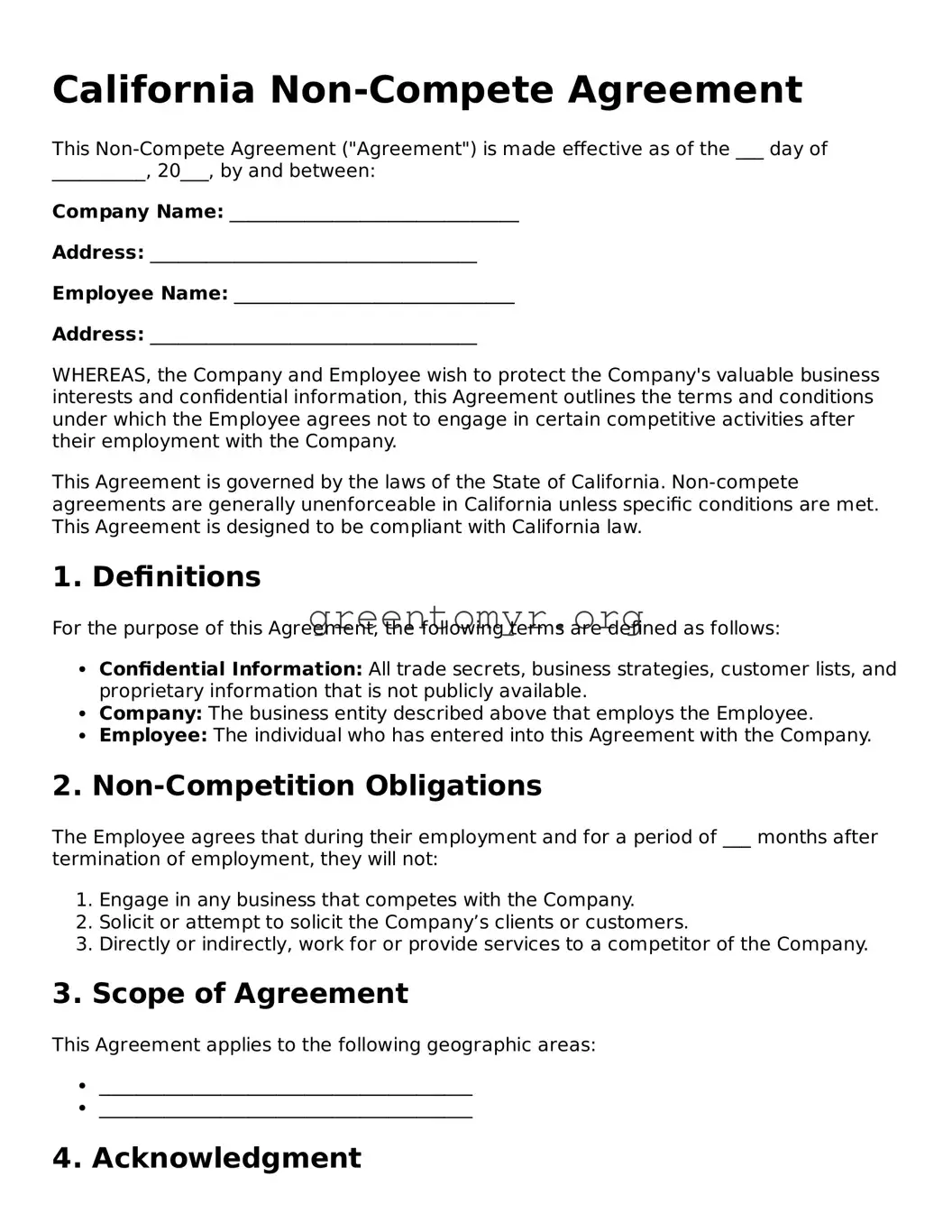California Non-Compete Agreement
This Non-Compete Agreement ("Agreement") is made effective as of the ___ day of __________, 20___, by and between:
Company Name: _______________________________
Address: ___________________________________
Employee Name: ______________________________
Address: ___________________________________
WHEREAS, the Company and Employee wish to protect the Company's valuable business interests and confidential information, this Agreement outlines the terms and conditions under which the Employee agrees not to engage in certain competitive activities after their employment with the Company.
This Agreement is governed by the laws of the State of California. Non-compete agreements are generally unenforceable in California unless specific conditions are met. This Agreement is designed to be compliant with California law.
1. Definitions
For the purpose of this Agreement, the following terms are defined as follows:
- Confidential Information: All trade secrets, business strategies, customer lists, and proprietary information that is not publicly available.
- Company: The business entity described above that employs the Employee.
- Employee: The individual who has entered into this Agreement with the Company.
2. Non-Competition Obligations
The Employee agrees that during their employment and for a period of ___ months after termination of employment, they will not:
- Engage in any business that competes with the Company.
- Solicit or attempt to solicit the Company’s clients or customers.
- Directly or indirectly, work for or provide services to a competitor of the Company.
3. Scope of Agreement
This Agreement applies to the following geographic areas:
- ________________________________________
- ________________________________________
4. Acknowledgment
The Employee acknowledges that they have read and understood the terms of this Agreement. By signing below, the Employee affirms their acceptance of this Agreement and its terms.
5. Governing Law
This Agreement is governed by the laws of the State of California. If any part of this Agreement is found to be unenforceable, the remaining portions shall remain in effect.
IN WITNESS WHEREOF, the parties hereto have executed this Non-Compete Agreement on the day and year first above written.
Company Representative Name: _______________________
Signature: _______________________________________
Date: _________________________________________
Employee Signature: _____________________________
Date: _________________________________________
